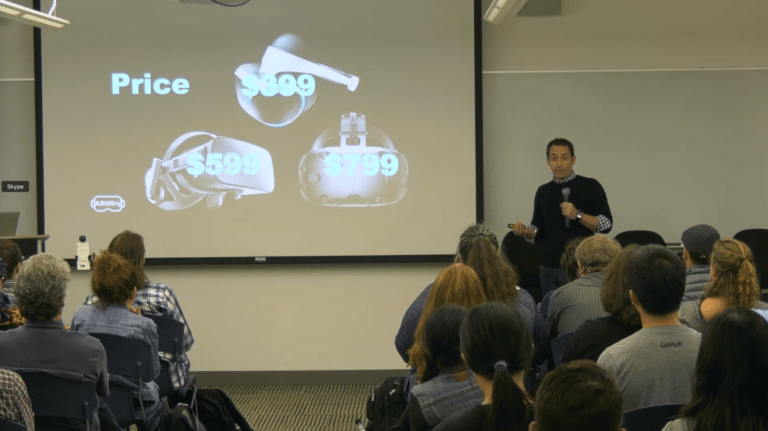
How many VR headsets have been sold to date, and by whom? What games and apps are seeing the most traction? And for both hardware and software, what are the biggest success factors so far? These are a few questions we tackled in the latest ARtillry Intelligence Briefing.
Published monthly, Intelligence Briefings are a combination of data and narrative insights. They zero in on top takeaways from the current AR and VR industry landscapes. Below is an excerpt from the latest installment.
Part I. Hardware Adoption By Platform
Units Sold: Summary
Tier 1
Playstation VR: 1M
HTC Vive: .42M
Oculus Rift: .24M
Tier 2
Samsung Gear VR: 5M
Google Daydream: .26M
Tier 3
Google Cardboard: 10M
Total Units: 16.92M
Units Sold: Breakdown
Tier 1 (Tethered VR)
Playstation VR
Units sold: 1M
Analysis
PSVR’s unit sales are greater than the Rift and VIVE because out of the gate, it’s
already compatible with an installed base of 40M PlayStation4 units. That
increases its addressable market and lowers the adoption barrier for many
consumers, given that competing headsets require a designated PC purchase.
However the PSVR lacks some of the feature advantages of competing systems
such as resolution, field of vision, and its content library is narrower and focused
mostly on games.
HTC Vive
Units Sold: .42M
Analysis
The Vive has the second highest unit sales in tier 1, mostly due to its longer
tenure in the market. Due to supply chain and shipping delays, the Oculus Rift
and PSVR entered the market later in 2016. Other Vive advantages include a
better room scale tracking system (Valve’s Lighthouse system) and more
available content. The latter is a function of its content distribution model that
utilizes the Steam platform, which is open for developer submissions. This has
made it a favorite among developers (see below). This is analogous to
Microsoft’s position in the PC world, compared with Apple’s more gated approach
to approved software. It is a double-edged sword as more content provides
volume, but also quality control challenges. Vive has developed as more of an
enterprise product (again like Microsoft) compared to the Oculus Rift’s greater
consumer appeal.
Oculus Rift
Units Sold: .24M
Analysis
The Rift experienced many launch delays in 2016, including its anticipated Touch
Controller. The hand controllers are now known as superior to competing HMD
inputs, however delays to market hurt the Rift’s market share. As stated above
competitor HTC Vive has taken an open approach to content development; Rift
has taken the opposite approach with a more strict set of standards for content
distributed in its Home software distribution platform (again, like Apple). This has
made it more of a consumer favorite, while developers and enterprises gravitate
more towards the Vive’s open and customizable parameters. Though the Rift has
superior hand controllers, its room scale tracking system is inferior to HTC Vive.
Rift further positioned itself advantageously in February when it dropped the
bundled price of its headset and touch controllers to $599 (previously $799).
Tier 2
Samsung Gear VR
Units Sold: 5M
Analysis
Gear VR is the best selling headset on the market, due partly to its low price and
the inherent benefits of mobile VR. Headsets in this category utilize the device
that many consumers already own, rather than requiring an additional costly PC
rig. Gear VR’s sales volume also result from its tenure in the market. It’s closest
competitor — Daydream View — only recently entered the market (October 2016).
However, Daydream has the potential to outpace Gear VR due to Google’s reach
and developer network (see below). Samsung is further challenged by the stain
left by the Galaxy Note 7 recall. Beyond PR, the loss of that device drastically
reduced the addressable market of compatible Gear VR handsets, creating a gap
for competitors.
Google Daydream View
Units Sold: .26M
Analysis
Though Google enters the market later than the comparable Gear VR, we
believe it will outpace its tenured counterpart. Its growth and eventual market
share will result from Google’s advantages in this race. For one, it has a massive
developer network built from the Android operating system, on which the
Daydream platform is based. This will amplify the device’s consumer appeal with
more content. That content will then compel more device manufacturers to build
Daydream-compatible handsets. This virtuous cycle will create a more attractive
choice for consumers than Gear VR. Its growth will mirror (in magnitude and
model) that of Android. Importantly, Google is also motivated and vested in
Daydream becoming the center of the next major computing platform — just as it
did with Android and the smartphone revolution. This outlook indicates that
Google will put a lot of muscle behind the Daydream platform.
Tier 3
Google Cardboard
Units Sold: 10M
Analysis
Google Cardboard matches Gear VR for the highest selling VR headset, though
some consider it not worthy of that designation. It has achieved this status due
simply to one factor: cost. Literally made of cardboard, it requires low cost
components and a wide compatibility of smartphones. Much of its market
penetration in fact has been a result of promotional giveaways in conference
SWAG bags or the New York Times’ famous cardboard distribution campaign.
This was to seed its VR content for embedded reporting and video essays. The
user experience is rudimentary, but has served to many as the “gateway drug”
for VR. Google will put more effort into Daydream (and its Tango AR platform),
but cardboard will still be supported in efforts to distribute VR to developing
nations and within schools globally.
For a deeper dive on AR & VR insights, see ARtillry’s new intelligence subscription, and sign up for the free ARtillry Weekly newsletter.
Disclosure: ARtillry has no financial stake in the companies mentioned in this post, nor received payment for its production. Disclosure and ethics policy can be seen here.
